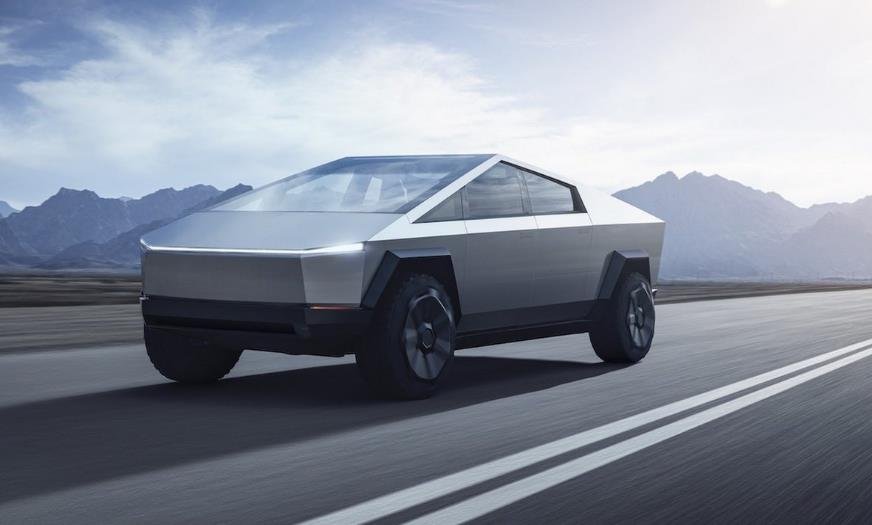Tesla, the world’s leading electric vehicle maker, has recently applied for a patent for a new “ultra-hard” steel alloy that it plans to use for the Cybertruck, its futuristic electric pickup truck. The patent application reveals some details about the composition, properties, and applications of the steel alloy, which could have a significant impact on the durability, performance, and cost of electric vehicles.
The Cybertruck’s steel alloy is a type of stainless steel that has a high hardness, strength, and corrosion resistance. According to the patent application, the steel alloy has a hardness of at least 400 HV (Vickers hardness), a yield strength of at least 1100 MPa (megapascals), and a corrosion resistance of at least 500 mV (millivolts) in a 3 wt% sodium chloride aqueous solution. These values are much higher than the typical stainless steel grades used in the automotive industry, such as 301, 304, and 316.

The patent application also states that the steel alloy is composed of iron (Fe) and other elements, such as carbon ©, manganese (Mn), silicon (Si), chromium (Cr), nickel (Ni), molybdenum (Mo), titanium (Ti), aluminum (Al), and nitrogen (N). The exact proportions of these elements are not disclosed, but they are likely to be similar to the 300 series stainless steel, with some modifications to enhance the hardness and corrosion resistance.
How is the Cybertruck’s steel alloy made?
The Cybertruck’s steel alloy is made by a process called cold working, which involves deforming the metal at a low temperature without changing its crystal structure. Cold working increases the hardness and strength of the metal by creating defects and dislocations in the metal lattice, which resist further deformation. Cold working also improves the corrosion resistance of the metal by creating a thin layer of oxide on the surface, which acts as a barrier against chemical attacks.
The patent application describes a method of cold working the steel alloy by rolling it into a thin sheet with a thickness of less than 3 mm. The rolling process applies a high pressure and a high strain rate to the metal, which increases its hardness and strength. The rolling process also creates a smooth and uniform surface on the metal sheet, which reduces the need for further processing or finishing.
Why is the Cybertruck’s steel alloy important?
The Cybertruck’s steel alloy is important because it could offer several advantages for the electric vehicle industry. Some of these advantages are:
- Durability: The Cybertruck’s steel alloy is designed to withstand high impacts, abrasions, and corrosions, which are common challenges for electric vehicles. The steel alloy could protect the vehicle from damage caused by road debris, collisions, weather, or vandalism. The steel alloy could also extend the lifespan of the vehicle and reduce the maintenance costs.
- Performance: The Cybertruck’s steel alloy is expected to have a high stiffness and a low weight, which are desirable characteristics for electric vehicles. The steel alloy could improve the handling, stability, and efficiency of the vehicle, as well as the range and payload capacity. The steel alloy could also enable the vehicle to have a unique design and shape, such as the Cybertruck’s angular and futuristic appearance.
- Cost: The Cybertruck’s steel alloy could reduce the cost of electric vehicles by simplifying the manufacturing process and the material selection. The steel alloy could eliminate the need for complex stamping, welding, painting, or coating processes, which are typically required for conventional steel or aluminum body panels. The steel alloy could also reduce the number of parts and components needed for the vehicle, as well as the waste and scrap generated during the production.
What are the implications of the Cybertruck’s steel alloy patent?
The Cybertruck’s steel alloy patent could have significant implications for the electric vehicle industry, as well as the broader transportation sector. The patent could give Tesla a competitive edge over other electric vehicle makers, as well as traditional automakers, by offering a superior and innovative product that appeals to a wide range of customers. The patent could also inspire other companies to develop and adopt similar or alternative materials and technologies for their electric vehicles, which could lead to more diversity and innovation in the market. The patent could also contribute to the environmental and social benefits of electric vehicles, such as reducing greenhouse gas emissions, fossil fuel consumption, and air pollution, as well as creating new jobs and opportunities in the green economy.
